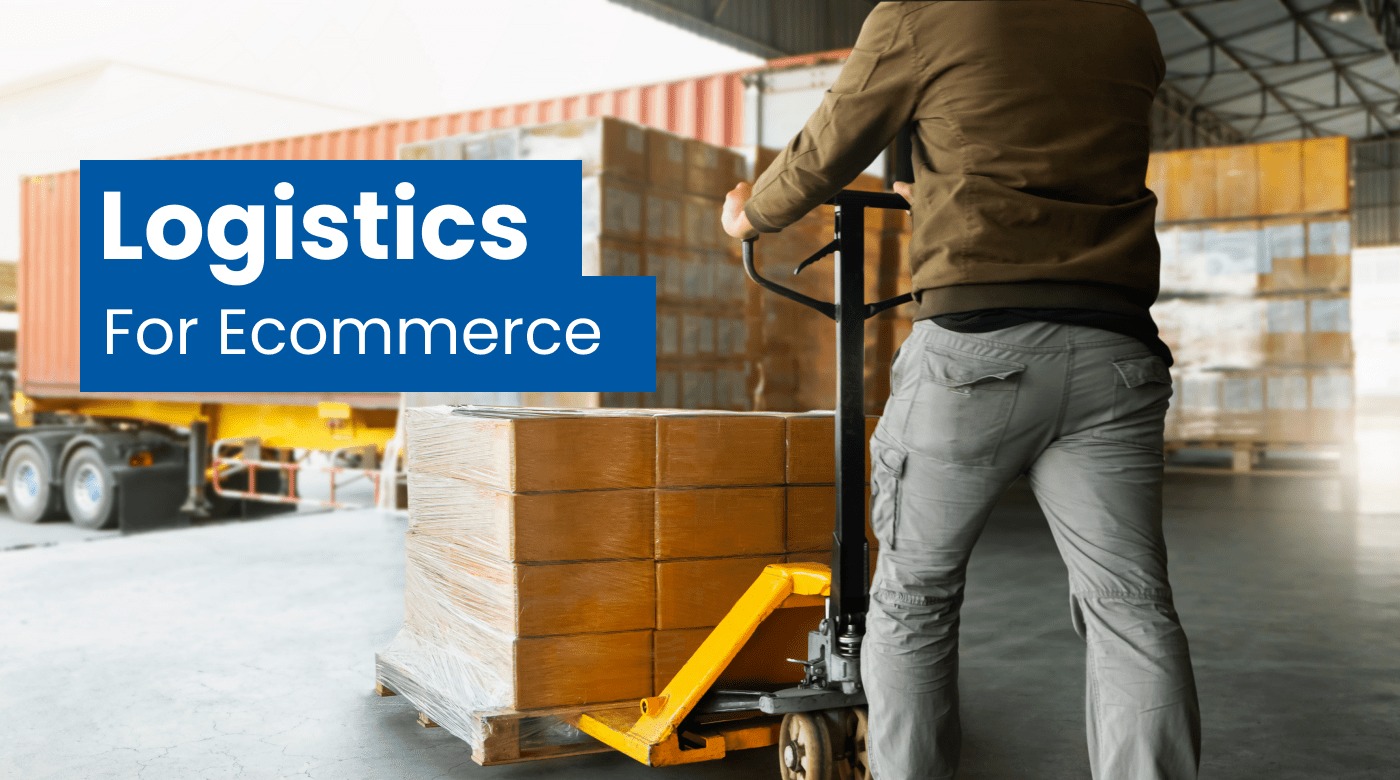As e-commerce continues to be one of the most dynamic sectors of the economy, it’s also becoming more and more demanding.
The logistics of getting orders to customers is more complex than ever, and as an e-commerce owner, you need to fine-tune this aspect of your business to succeed in the long term.
Managing e-commerce logistics is critical — having quick, efficient, and cost-effective logistics is now a competitive advantage in e-commerce.
This guide will explain the ins and outs of modern e-commerce logistics, why outsourcing logistics has become a common practice, and how to future-proof your logistics operations.
What is E-Commerce Logistics?
Logistics is an activity within the supply chain that refers to the movement, storage, and flow of goods, services, and information.
In the e-commerce world, logistics is the process that enables online retailers to efficiently deliver orders to customers. Once a customer places an order, logistics involves all the necessary steps to ensure the goods are delivered to their door without any delays or damage.
These steps include buying and storing supplies, managing inventory, packing and shipping products, and delivering the order to the customer’s doorstep. To have a well-coordinated e-commerce logistics process, all of these steps must work harmoniously.
As the North American e-commerce market continues to grow, the market for e-commerce logistics grows alongside it. The e-commerce logistics market was estimated at $70.3 billion in 2021, and is expected to grow at a compound annual rate of 21.1% through 2030.
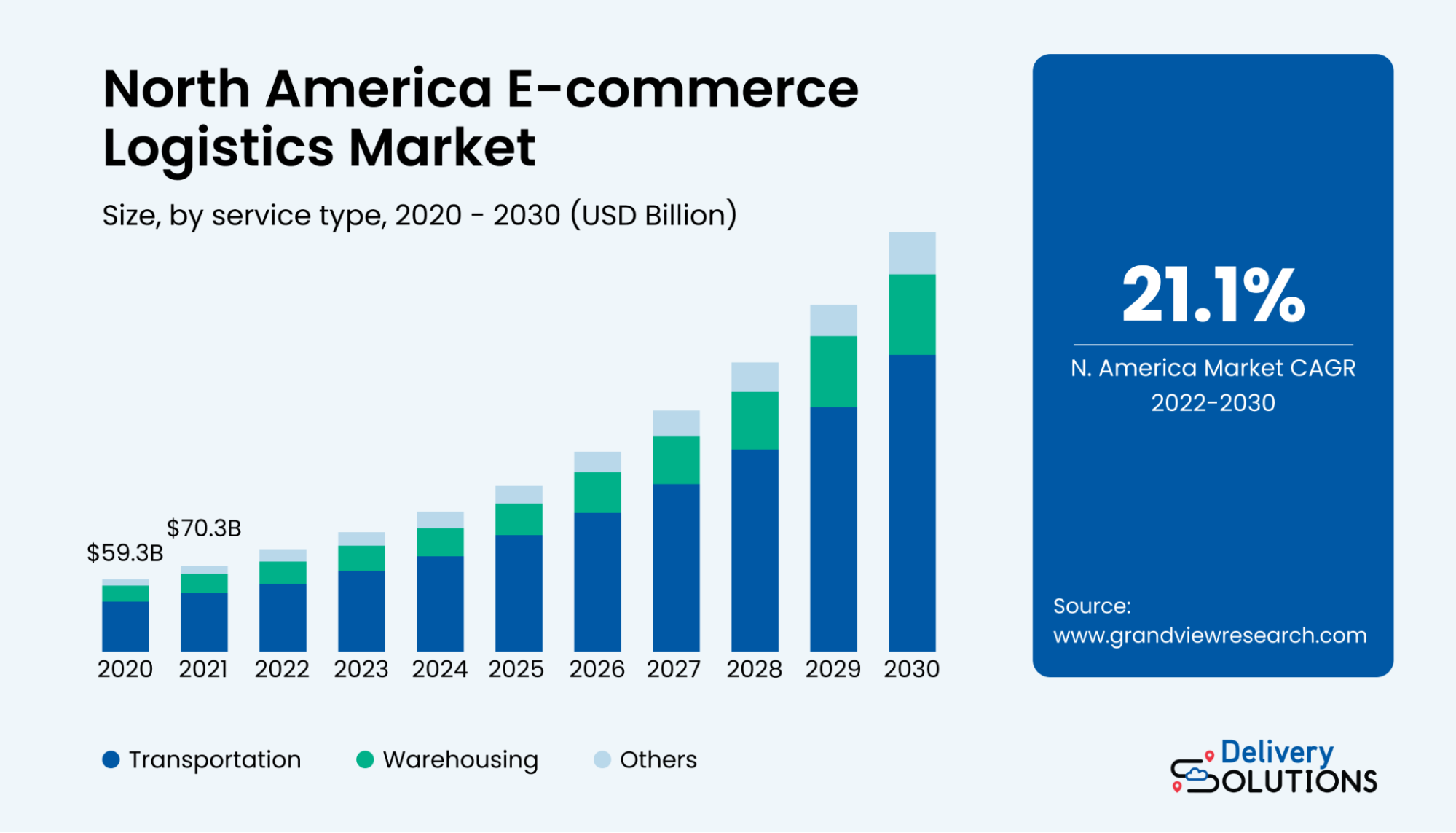
The need for e-commerce logistics has increased due to consumers' ability (and preference) to buy things online. People increasingly use online stores to shop for everything from groceries to gadgets because it’s easy and convenient. They also expect the buying experience to be smooth and seamless.
Logistics is a critical element of any e-commerce business. As your online marketplace continues to grow, this process becomes more complicated. Ensuring each aspect runs smoothly will help you meet evolving customer expectations and maintain efficiency.
3 Phases of Logistics for E-Commerce
Most logistics processes are sorted into three categories: inbound, outbound, and reverse. Each plays a pivotal role within the supply chain, and all three must work harmoniously.
1. Inbound logistics
In e-commerce, the inbound logistics process is when a business sources the products it will eventually sell from their suppliers.
Inbound logistics management is responsible for receiving and organizing the incoming shipments into the company’s warehouse, stores or distribution centers. Common inbound logistics processes involve:
Sourcing: Finding the products you need to run your business and deciding which supplier or manufacturer you’ll buy them from.
Purchasing: Securing the products by placing an order with the suppliers.
Transportation: The supplier is responsible for shipping the goods to your warehouse, store, or fulfillment center.
Receiving and Storing: Your team receives and logs the inventory before moving it into storage. This is the first part of the e-commerce fulfillment process. Every time a customer places an order, the inventory will gradually enter the outbound logistics stage and make its way to its destination.
For effective inbound logistics, e-commerce businesses need to forecast inventory demand, invest in a reputable warehouse management system, and consider outsourcing logistics to a third party logistics provider (3PL).
2. Outbound (last-mile) logistics
Outbound logistics, or last-mile logistics, is the movement of inventory out of storage and into the hands of the customer. Because this is the stage that the customer directly interacts with, the efficiency of your last-mile logistics process is crucial to your customer satisfaction and brand reputation.
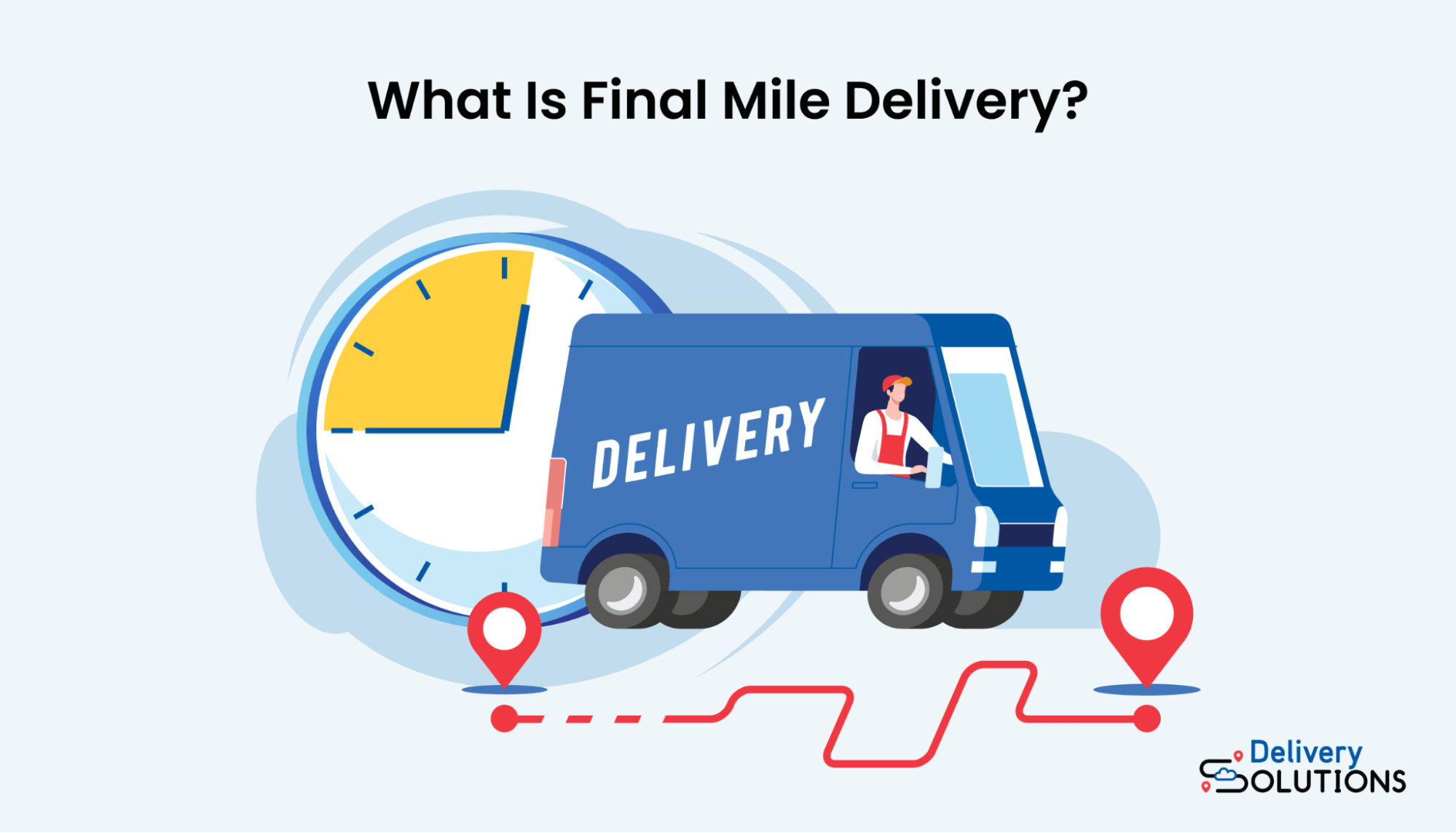
Inventory management
E-Commerce inventory management is a critical part of the supply chain that tracks and plans the inventory levels of your online store. Tracking inventory helps you determine what kind of stock (and how much) you need to order at a given time.
Order processing
Once a customer places an order from an e-commerce website, the business accepts and confirms the order and sends the order details to the fulfillment team to get it ready for shipping.
Picking and packing
The online order is located in the warehouse, where it’s packaged and labeled with the correct shipping details. Inventory levels should be updated in real-time to prevent stockouts or overstocking during this stage.
Last-mile delivery
Last-mile delivery (or final mile delivery) logistics is the movement of goods from the fulfillment center or shipping hub to the customer’s doorstep. A last-mile carrier delivers the goods to the customer’s home or a pickup point during this final stage. The main goal of the last mile is to get the parcel to its destination as quickly and efficiently as possible.
3. Reverse logistics
Forty-nine percent of American digital shoppers have returned an online purchase in the past year. Because returns are an inevitable part of doing business online, reverse logistics will always play an important role in supply chain management.
While outbound logistics focuses on moving products from the business to the customer, reverse logistics focuses on the opposite — moving products from the customer back to the e-commerce retailer. The reverse logistics process includes several stages including return shipping and processing and recycling or reselling of the product.
An optimized reverse logistics process makes returns a seamless, hassle-free experience for customers. At the same time, it’s an efficient, cost-effective and environmentally conscious process for the e-commerce retailer.
Third-party Logistics (3PL)
Many e-commerce businesses aren’t large enough to justify the expense of a whole warehouse or dedicated fulfillment staff to orchestrate all aspects of logistics. Many smaller and medium-sized e-commerce companies may not have access to all these resources.
That’s where a 3PL provider comes in. A third-party logistics partner offers various logistical solutions for your business, so you don’t have to carry the weight of all the logistical management. Services offered by 3PLs include:
- Receiving
- Warehousing
- Inventory management
- Picking and packing
- Shipping
- Reverse logistics
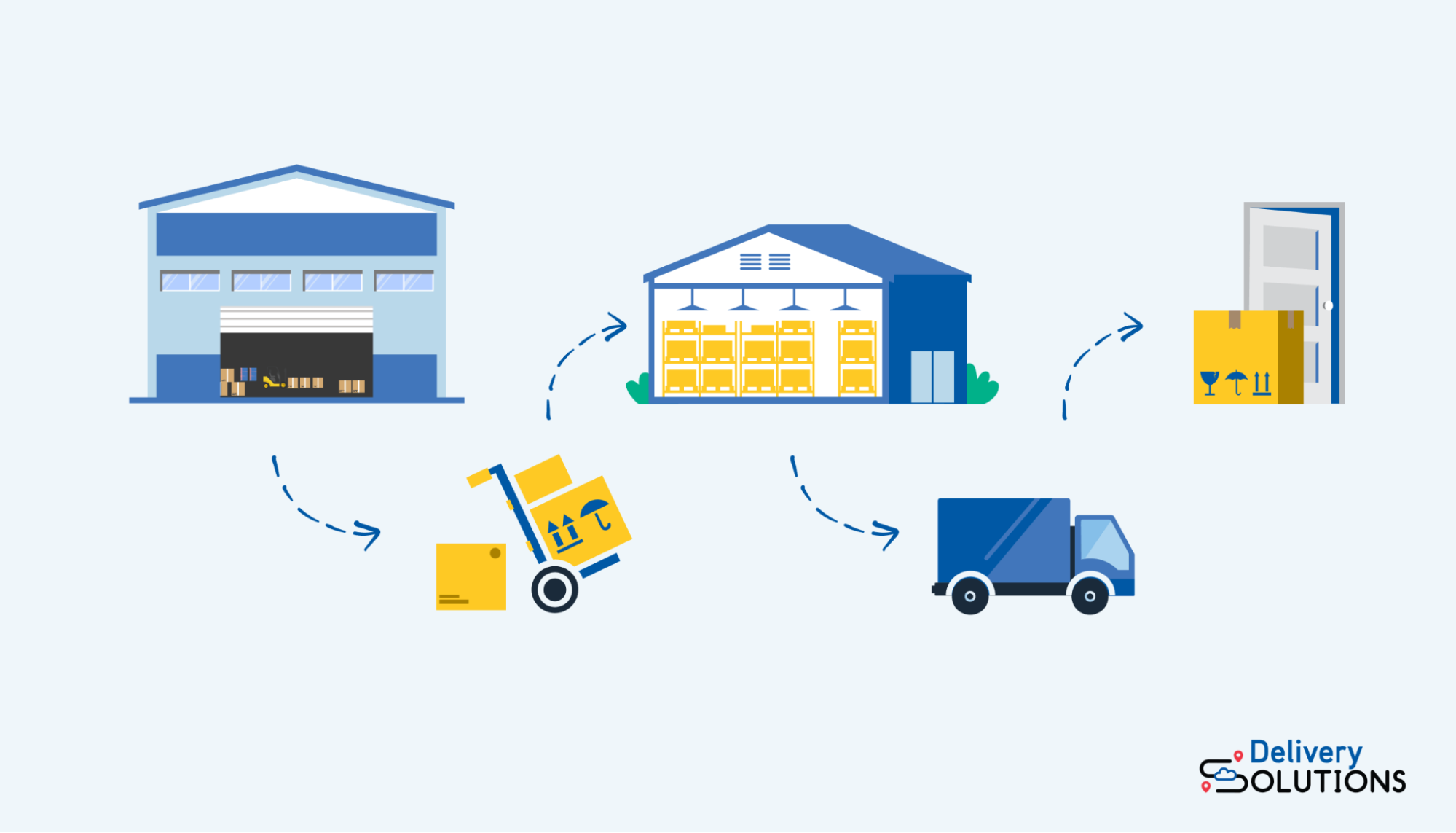
They can also help with customer support and tracking, freight and shipping coordination, and virtually every other activity that helps businesses move goods into the hands of their customers efficiently and cost-effectively.
For example, a 3PL partner can provide warehousing facilities to e-commerce businesses without brick-and-mortar locations to store their inventory. The 3PL company stores, organizes, and ensures your inventory is safe.
Companies who choose to outsource their logistics to 3PL partners often do so because these partners are capable of handling all the complexities of logistics, allowing the company to focus on core competencies, like product development.
5 Best Practices For Streamlining Your E-Commerce Logistics
Logistics are the backbone of any modern e-commerce business. Here are some key aspects you should fine-tune to future-proof your logistics process and stay competitive.
1. Reduce wait times by automating order management
Order management helps businesses coordinate all the steps involved in fulfilling a customer’s order. As your e-commerce business grows, automating your order management is essential if you want to handle large volumes of orders from multiple digital sales channels.
An order management system (OMS) digitally tracks and manages almost every aspect of outbound and reverse logistics — including inventory management, order processing, and customer returns — all in one place. A digital system simplifies and streamlines logistics, helping you efficiently fulfill customer orders.
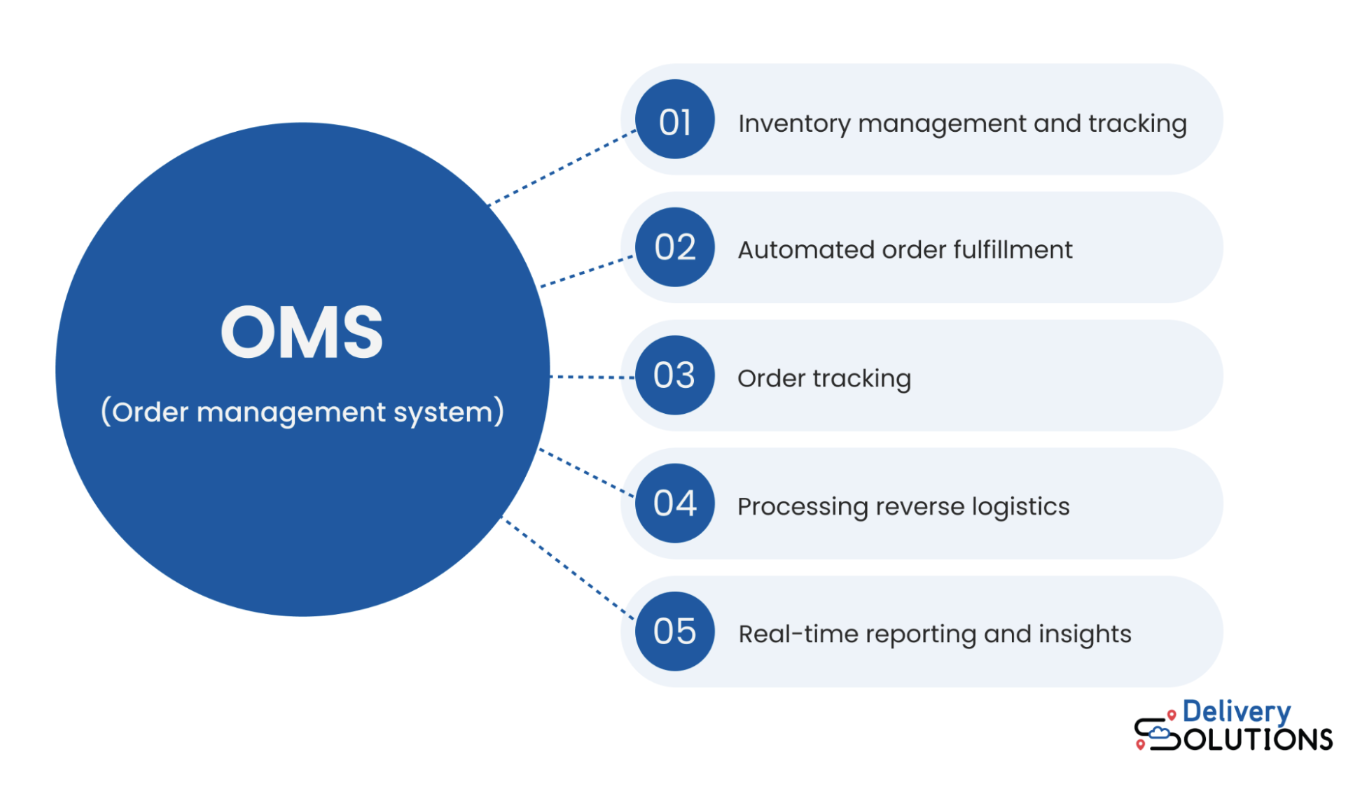
For example, order management systems allow you to track inventory levels in real-time, forecast product demand, and restock accordingly to ensure you always have the right products in stock to fulfill orders.
Additionally, an OMS can automate order processing, increasing the speed and efficiency of your orders. When a customer places an online order, the system receives and records online orders, routing them directly to the appropriate warehouse for delivery.
2. Satisfy customers with fast (and low-cost) shipping
Speedy delivery is one of the key aspects of the post-purchase experience for customers. It’s especially important for e-commerce retailers. When asked how quickly they expected to receive their online orders, 41% of global shoppers said they hoped to receive it within a day.
Customers also value low-cost delivery options. In a recent PwC survey, 40% of customers who intend to cut back on online shopping said it’s because delivery costs are too high. Meeting these two important customer demands as an e-commerce business is crucial to staying competitive.
Delivery Solutions is a leading Omnichannel Experience Management (OXM) Platform provider that enhances your same-day delivery capabilities, so you can easily fulfill customer demands for quick shipping.
3. Optimize final mile delivery with flexible delivery options and order tracking
The last mile is an important part of the supply chain. The efficiency of your final mile logistics directly impacts customer satisfaction. Failed or late deliveries, expensive shipping fees, and poor customer service are simply not an option.
One way to future proof your final mile delivery is to offer flexible delivery options which allow customers to choose their preferred pickup time and location. With Delivery Solutions’ multi-provider network, you can offer multiple delivery options, such as in-store pickup (if you have brick-and-mortar stores) or curbside pickup — a very popular delivery option among millennial consumers. This will help you cater to all your consumers' different needs and preferences.
Another surefire way to keep customers happy during the final mile is to offer real-time order tracking.
![]()
Real-time tracking gives customers a sense of transparency and control over their orders. They can see the progress of their delivery in real-time, anticipate delays, and plan their day accordingly. Knowing exactly when their package will arrive helps customers intercept it more easily, preventing failed deliveries, which saves your business a lot of time and money.
4. Partner with the right 3PL to overcome logistics challenges
As we already mentioned, a reliable 3PL partner can take the heavy lifting off your hands regarding logistics while you’re still in control of your products. Here are some key steps to help you find the right provider:
- Assess your needs: Before you look for a 3PL partner, assess your logistics needs and identify what your provider can help you with. Do you need warehousing facilities to store your goods or someone who can handle every aspect of logistics as you scale your business? Assessing your needs is the first step to finding the right logistics partner.
- Consider location: Your logistics company’s location should make sense for you. Look for 3PL partners that are close to your suppliers and customers.
- Evaluate their e-commerce integrations: Ensure your 3PL partner has the right technology to integrate with all your e-commerce outlets. For example, 3PLs should be capable of bilateral communication, receiving information from your system and sharing important information about inventory, orders, etc. with your technology.
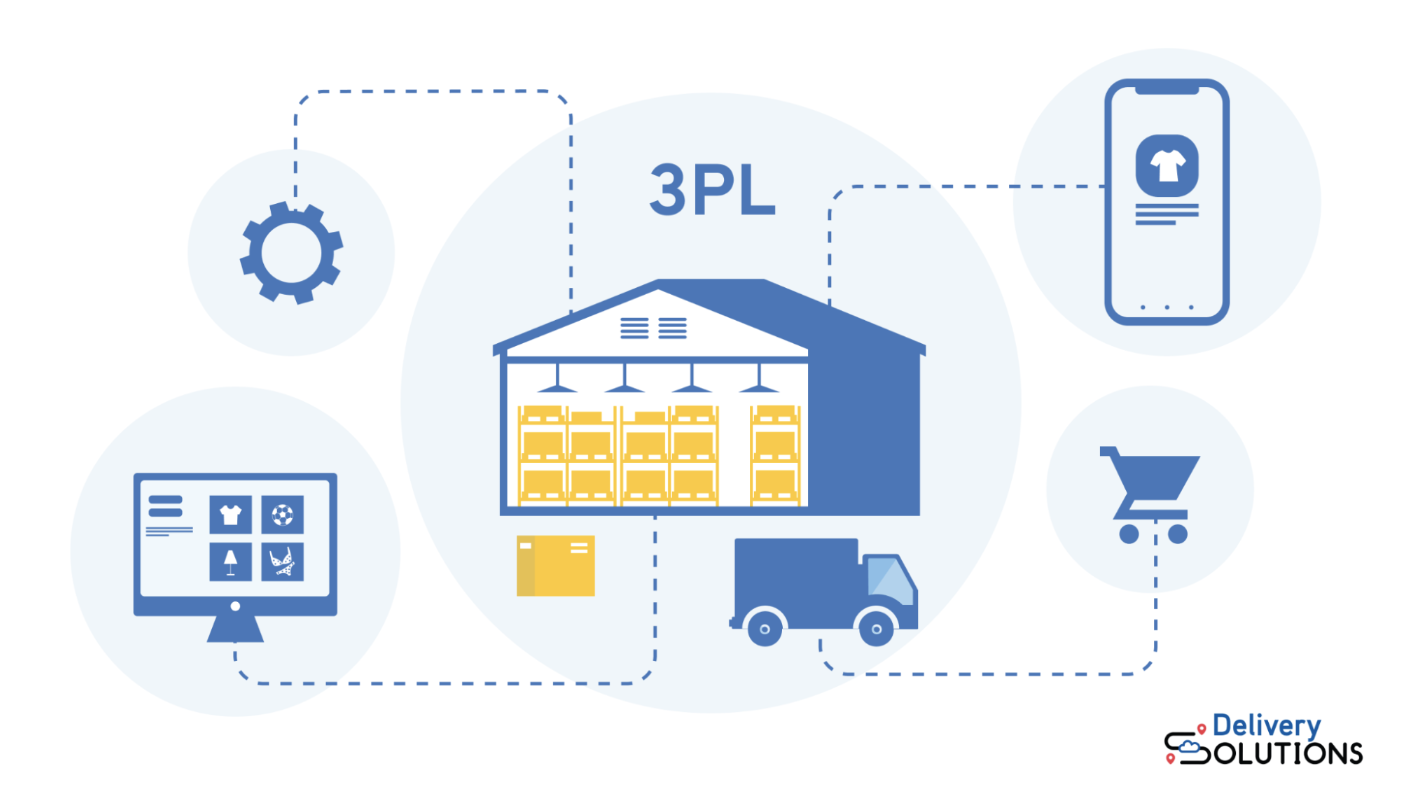
- Check their track record: Choose a 3PL with a good reputation and the social proof (customer reviews, testimonials, case studies) to back it up.
5. Simplify reverse logistics with hassle-free returns
Many e-commerce companies are making reverse logistics a priority.
Online retailers are focused on managing product returns more efficiently and minimizing the effect these returns have on the environment, while offering a customer-centric returns experience. Over 84% of online shoppers would turn their back on a retailer after a bad return experience.
To optimize reverse logistics, ensure you have a clear return policy, and communicate it clearly to your customers. When customers have returns, make it easy for them to send it back by adding return labels to the package. Or better yet, if you have physical stores, consider implementing an in-store return policy to facilitate returns further. This way, customers can get their money back instantly and avoid the hassle of printing return labels and shipping a parcel.
To mitigate returns and improve your reverse logistics even further, use the data insights from your OMS to identify areas for improvement.
Managing E-Commerce Logistics Doesn’t Have To Be Complicated
E-Commerce logistics is a fundamental part of modern e-commerce channels, and plays a big role in delivering an exceptional customer experience. However, managing this complex logistics infrastructure on your own can be challenging.
For this reason, outsourcing part or all of their logistics operations has become a common practice for modern e-commerce businesses.
If you’re ready to maximize efficiency, schedule a demo today to find out how Delivery Solutions can streamline your logistics, from warehousing to the final mile.
Ryan Caldarone
Ryan is a Sr. Digital Marketing Manager with over ten years of experience in B2B eCommerce, specializing in brand storytelling and content. Having contributed to hundreds of creative projects for SMBs and startups across the tech, energy, and fine arts sectors, Ryan brings diverse perspectives.
